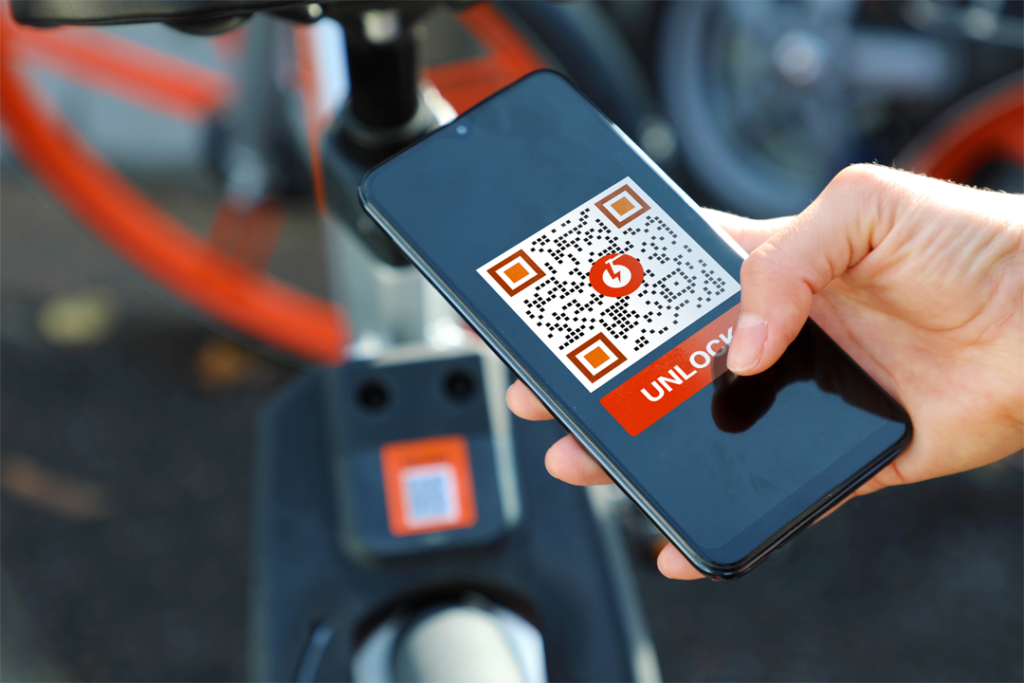In the fast-paced world of digital marketing, staying ahead of the competition requires embracing innovative tools and strategies. One such tool that has emerged as a game-changer is the QR code. Quick Response (QR) codes have gained immense popularity due to their ability to bridge the gap between offline and online experiences. In this blog post, we will explore the untapped potential of QR codes and how they can revolutionize your digital marketing efforts, propelling your success to new heights.
What are QR codes, and How Do They Work?
QR codes are two-dimensional barcodes that can be scanned using a smartphone or QR code reader. These codes consist of black squares arranged on a white background and contain encoded information. When scanned, the user’s device interprets the code and can take various actions based on the embedded content, such as opening a website, displaying contact information, or initiating a call or message. Businesses and individuals can create their own QR codes using a QR code generator tool, allowing for customized and versatile uses.
1. Enhancing User Engagement and Experience
QR codes offer a seamless and interactive way to engage users, making them an invaluable tool for digital marketers. Here’s how QR codes can elevate user engagement and experience:
a. Easy access to information
By incorporating QR codes into your marketing materials, you provide users with a convenient way to access relevant information. Whether it’s product details, pricing, specifications, or user reviews, users can quickly scan the QR code and obtain the information they need without having to search or navigate through a website. This streamlined access to information enhances the user experience and saves them time and effort.
b. Interactive campaigns and gamification
QR codes can be used creatively to engage users through interactive campaigns and gamification. For example, you can create QR code-based treasure hunts where users scan codes at different locations to unlock clues or rewards. This turns the marketing experience into a fun and interactive game, encouraging users to actively participate and fostering a sense of excitement and enjoyment.
c. Personalized experiences
Leverage user data to create personalized experiences through QR codes. By using QR codes that are unique to each user, you can deliver personalized offers, recommendations, or loyalty rewards. For example, a QR code sent via email or SMS could provide users with a personalized discount or offer based on their purchase history or preferences. This personalized approach enhances the user experience, making users feel valued and increasing the likelihood of conversion and customer loyalty.
d. Exclusive content and promotions
QR codes can be used to provide access to exclusive content or promotions. By scanning the QR code, users can unlock special offers, discounts, or premium content that is not available elsewhere. This creates a sense of exclusivity and rewards users for their engagement. It also encourages them to take action and increases their perception of value, leading to higher conversion rates and customer satisfaction.
e. Instant feedback and reviews
QR codes can be utilized to gather instant feedback and reviews from users. By linking the QR code to a feedback form or review platform, users can easily provide their opinions and ratings on products, services, or experiences. This real-time feedback helps businesses understand customer sentiment, identify areas for improvement, and make timely adjustments to enhance the user experience.
2.Trackability and Analytics

Tracking and analyzing QR code performance is crucial for maximizing the effectiveness of your digital marketing campaigns. By utilizing QR code generators that provide analytics, you gain valuable insights into user behavior, campaign effectiveness, and return on investment (ROI). Here’s why tracking and evaluating QR code performance is a key benefit:
a. Measure campaign success
With QR code analytics, you can track the number of scans, when and where the scans occurred, and the devices used. This data provides quantitative metrics that allow you to assess the success of your campaigns. By comparing the performance of different QR codes, you can identify which campaigns are generating the most engagement and conversions.
b. Understand user behavior
QR code analytics can provide valuable information about user behavior after scanning the code. For example, you can track the actions users take after scanning, such as visiting a specific landing page, making a purchase, or submitting a form. This data helps you understand user preferences, interests, and intentions, allowing you to tailor your marketing strategies accordingly.
c. Optimize marketing efforts
By analyzing QR code data, you can identify areas for improvement and optimize your marketing tactics. For instance, if a QR code has a high scan rate but a low conversion rate, you can examine the associated landing page or offer to identify potential issues. You can then make data-driven adjustments to enhance the user experience and increase conversions.
d. Refine target audience targeting
QR code analytics can provide insights into the demographics and characteristics of users who scan your codes. This information helps you refine your target audience and tailor your marketing messages to better resonate with your ideal customers. By understanding who is engaging with your QR codes, you can improve the relevancy and effectiveness of your campaigns.
e. Track ROI
QR code analytics enable you to track the ROI of your marketing campaigns more accurately. By correlating QR code scans with specific marketing initiatives or campaigns, you can measure the revenue generated, customer acquisition costs, and other key performance indicators. This data helps you evaluate the profitability and effectiveness of your QR code-driven marketing efforts.
3. Creative Applications of QR Codes in Digital Marketing
QR codes can be implemented in various creative ways to amplify your digital marketing efforts:
a. Social media integration
Create QR codes that link directly to your brand’s social media accounts, such as Facebook, Instagram, Twitter, or LinkedIn. Encourage users to scan the QR codes to easily follow and engage with your brand on these platforms. This integration enables you to expand your social media reach, build a community of loyal followers, and foster ongoing brand engagement.
b. Mobile payments and e-commerce

Integrate QR codes with mobile payment systems to facilitate seamless and efficient transactions. By scanning a QR code, users can make secure payments or complete purchases directly from their mobile devices. This simplifies the checkout process, reduces friction, and provides a convenient payment option for customers.
c. Offline-to-online conversion
Use QR codes on print advertisements, billboards, flyers, or product packaging to bridge the gap between offline and online experiences. By scanning the QR code, users can be directed to specific landing pages, promotional offers, or product information on your website. This strategy helps drive traffic to your online platforms, capture leads, and provide a measurable connection between your offline marketing efforts and your online presence.
d. Interactive product experiences
Enhance user engagement and provide interactive experiences by incorporating QR codes on product packaging or labels. Scanning the QR code can unlock additional content, such as product tutorials, behind-the-scenes videos, customer testimonials, or interactive games. This interactive approach not only creates a memorable experience but also helps users better understand and appreciate your products.
e. Event promotions and ticketing
Utilize QR codes for event promotion and ticketing purposes. Generate unique QR codes for each event attendee, making it easy to scan tickets for entry. QR codes can also be used to provide event-related information, such as schedules, speaker profiles, maps, or exclusive offers. This streamlines the event experience for attendees and provides a convenient way to access event details.
f. Feedback and surveys
Include QR codes on customer receipts, packaging, or in-store displays to gather feedback and conduct surveys. By scanning the QR code, customers can provide valuable insights, opinions, or ratings about their experience with your brand. This feedback can help you identify areas for improvement, enhance customer satisfaction, and make data-driven decisions to refine your marketing strategies.
4. Best Practices for QR Code Implementation
To harness the full potential of QR codes in your digital marketing strategy, consider the following best practices:
a. Clear call-to-action (CTA)
When implementing QR codes in your digital marketing strategy, it’s crucial to provide a clear call-to-action that encourages users to scan the code. Clearly explain the value proposition and benefits they will gain by scanning the QR code. Use compelling language and concise messaging to convey the purpose of the QR code. For example, instead of simply saying “Scan here,” provide specific instructions such as “Scan to unlock exclusive content,” “Scan for a chance to win,” or “Scan to receive a special discount.” By emphasizing the value users will receive, you increase their motivation to engage with the QR code.
b. Design and branding
While QR codes have a standardized appearance, you can still incorporate your brand identity into their design. Utilize a QR code generator that allows you to customize the colors, add your logo, or apply branding elements. By incorporating your brand’s visual identity, you create a consistent and cohesive experience for users. This branding reinforcement can also increase recognition and trust. However, ensure that the QR code remains scannable by maintaining enough contrast between the foreground (dark squares) and background (light squares).
c. Testing and optimization
To maximize the effectiveness of your QR code campaigns, continuous testing and optimization are essential. Experiment with different variables such as QR code placement, design variations, and landing page content. Test various locations, such as on product packaging, print advertisements, or digital platforms, to identify the most effective placement for generating scans. Additionally, create multiple versions of the QR code with slight design variations and track their performance. A/B testing allows you to compare different designs and determine which one resonates better with your audience. Monitor scan data and analyze user behavior to identify areas for improvement and optimize your campaigns for higher engagement and conversion rates.
Final thoughts
QR codes have emerged as a game-changing tool for digital marketing success. Their ability to enhance user engagement, provide instant access to information, and track campaign performance makes them indispensable for modern marketers. By leveraging the untapped potential of QR codes and utilizing them creatively in your digital marketing efforts, you can unlock new levels of success, connect with your audience on a deeper level, and stay ahead of the competition in today’s dynamic digital landscape. Embrace QR codes as a powerful tool in your arsenal and witness the transformation they bring to your digital marketing strategy.



